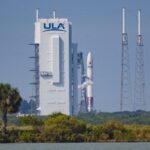The common house mouse is one of the most recognizable creatures on the planet, yet we know surprisingly little about the origins of this crafty rodent. New research shows that house mice first entered human settlements far earlier than previously thought—but they had to fight a rival species to maintain their status as one of humanity’s most reviled pests.
For decades, scientists assumed that wild mice first came into contact with humans only after the introduction of agriculture, when they began feasting on cultivated and stored crops. A new study published in Proceedings of the National Academy of Sciences challenges this conventional wisdom, showing that wild mice began to make human habitats their home from the very moment that hunter-gathers started to settle down and build permanent structures.
Evidence collected by researchers from Washington University in St. Louis and the University of Haifa in Israel suggests this happened as far back as 15,000 years ago, in the Levant region just east of the Mediterranean—approximately 3,000 years before the advent of crop agriculture. It was around this time that the Natufian people were transitioning from hunter-gatherers to a sedentary and semi-sedentary lifestyle—a transition that required the construction of permanent dwellings. This development attracted at least two species of wild mice, kindling a territorial battle that lasted for centuries. Eventually, the mouse we recognize today as the house mouse, Mus musculus domesticus, outcompeted its rival, the short-tailed Mus macedonicus.
To reach these conclusions, the researchers used a new technique called geometric morphometrics to identify and discern mouse fossils found in the Levant region. This method relies on high-resolution imaging and digital analysis, allowing the researchers to distinguish minute details in the tiny remains of the common house mouse and other species of “wild” mice. In addition, the researchers performed radiocarbon dating of fossils found at five different sites in Israel spanning 200,000 to 10,200 years ago, and they visited “living” models —villages of the Maasai people found in southern Kenya and Tanzania. By studying these semi-nomadic people, the researchers were able to step back in time and get a sense of what life was like thousands of years ago.
Mice began to appear as a distinct lineage somewhere between Iran and India, sometime in the last 100,000 years. These rodents had to make an “honest” living, scouring the landscape for grains, fruits, and seeds. Back then, the species that would eventually become the common house mouse was likely extremely rare, having to compete with rival species and fending of predators. The introduction of human settlements 15,000 years ago dramatically altered the landscape for these highly adaptable mice, both literally and figuratively.
“I would refer to the ancient house mice that we studied from the Levant—those that initially became associated with pre-farming, sedentary hunter-gatherers (the Natufian culture)—as ‘commensal’ rather than ‘domesticated,’” explained study co-author Lior Weissbrod in an interview with Gizmodo. “This means that the interaction was one-sided: mice were benefitting, but humans were neutral—neither benefitting nor being harmed.” It wouldn’t be until the advent of agriculture that the house mouse transformed into a full-on pest. Revealingly, the non-agricultural Maasai villagers look at their cohabitating mice with indifference.
When the Natufian people ended their hunter-gatherer ways, their early settlements in the Levant likely pushed out many species, but the more adaptable ones, such as mice, benefitted from the presence of constant and more reliable access to food and shelter. Food for the mice likely included wild grains collected by humans and stored inside the settlements, as well as the accumulation of organic trash, and possibly plant growth within organic-rich trash piles, explained Weissbrod. These ancient mice remained harmless commensals until the development of farming.
But as the new research points out, the path to its status as a house mouse was not a smooth one; the Natufian people were a semi-nomadic culture, often relocating after a few years. Their relocation efforts would have scattered mice back into the wild. What’s more, ancient house mice had to compete with short-tailed “wild” mice to maintain their illustrious territory. Over time, the house mouse managed to survive these hardships.
“What makes the results of our study particularly strong is that after the initial pulse of establishment of house mice in sedentary human settlements of the early Natufian period, there is a return of the ‘wild’ mouse with displacement of the house mouse…during a short phase when humans reverted back to mobility,” said Weissbrod.
During the final phase of Natufian culture, just prior to the Neolithic period and the onset of farming, house mice once again rebounded, accounted for 80 percent of the mice population, with wild mice accounting for the remaining 20 percent.
“We are dealing here with two different, but closely related species, belonging to the same genus and with broadly similar ecologies,” said Weissbrod. “We can speculate that with longer tails house mice were more agile and able to escape or navigate within a high-traffic human environment. Also, behaviorally, we can speculate that house mice were better able to cope physiologically with increased levels of stress in the human environment. Probably, their dietary habits were more flexible, allowing them to adapt to whichever types of food were unintentionally made available by humans.”
Importantly, similar patterns involving different mice species were discovered in modern Maasai villages in East Africa. There, rival mice are dividing-up their territory in a process known as “habitat partitioning,” where house mice mainly use settlements and wild ones use more natural settings.
With the rise of agriculture, large cities, and global travel, mice populations began to spread even further.
“They began to spread from the Levant with Neolithic societies to Europe, in a process that took thousands of years,” said Weissbrod. Migrating house mice had to overcome numerous obstacles, including different climates and new local species with which they had to compete. “From Europe, mice spread with humans to colonize new continents in more recent history.”
Today, mice are still one of the most adaptable species on the planet. We’ve now domesticated them as laboratory animals in biomedical research, and as household pets.
“Here, they bring us tremendous benefit, again changing the overall nature of our relationship with them,” said Weissbro. “We’ve had a long and complicated history with mice.”
Long and complicated, indeed. But as our 15,000-year-old relationship makes evidently clear, we haven’t been able to make a better mouse trap in all that time.
[PNAS]













